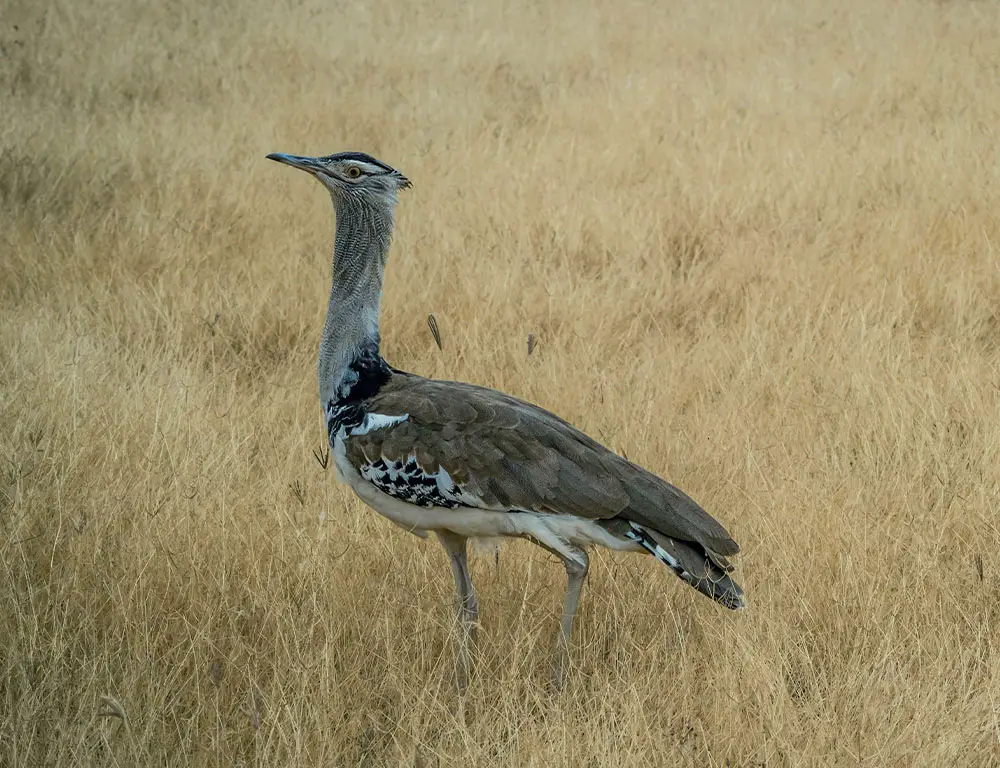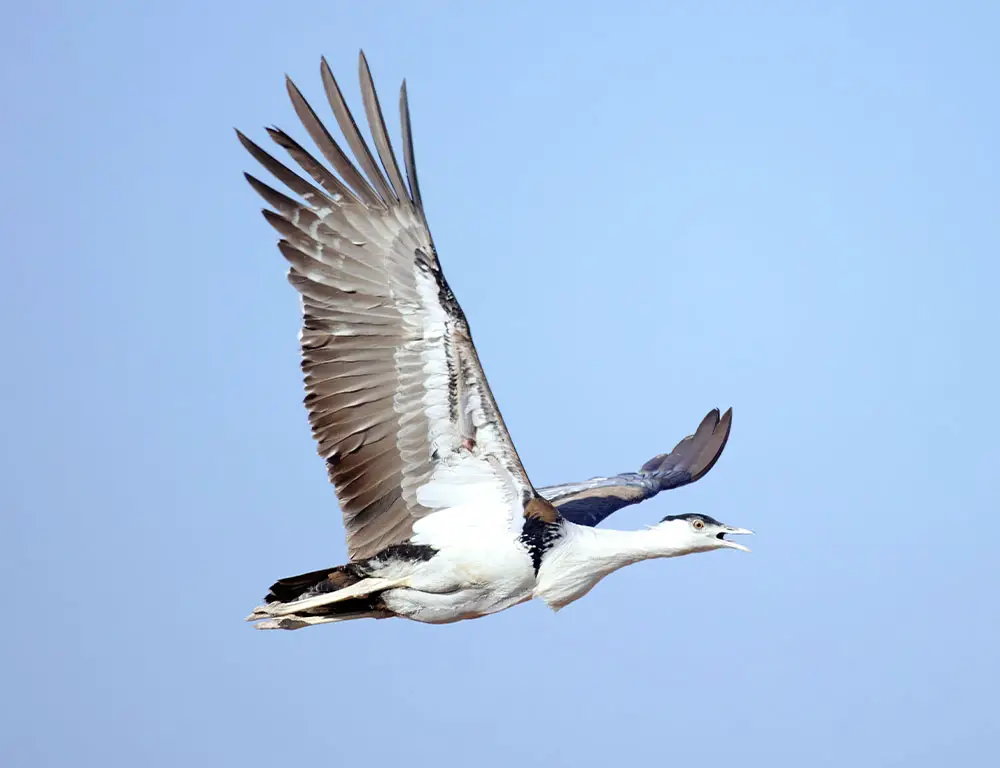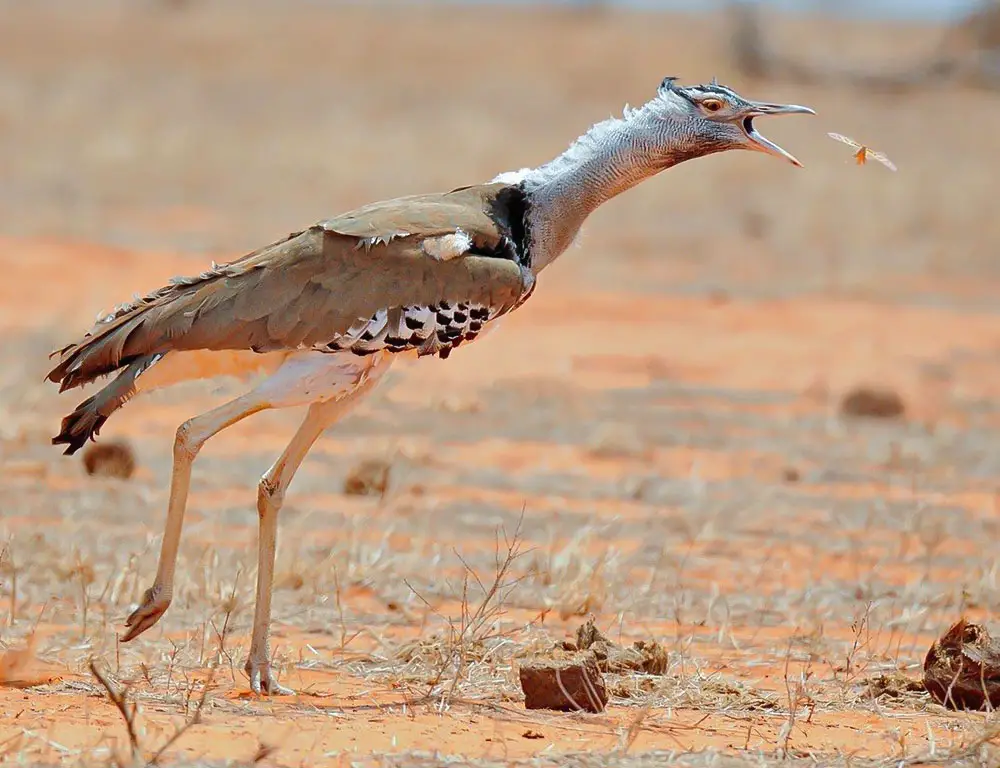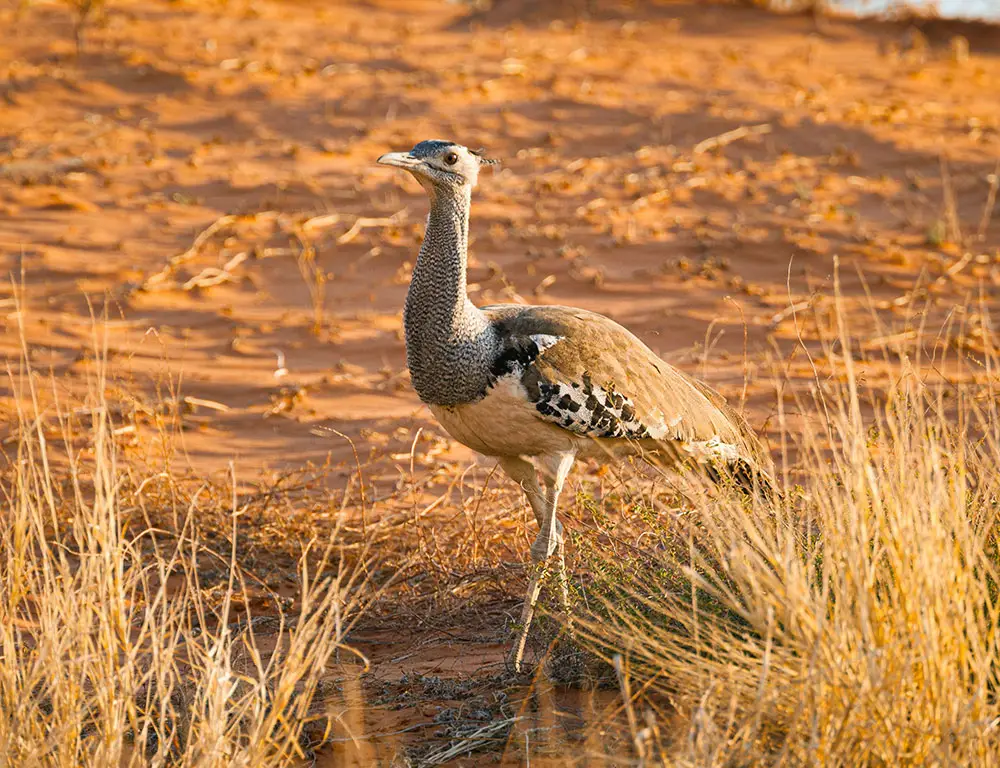Step into the expansive realms of grasslands and savannas, where the Bustard Bird reigns as a symbol of vast open spaces and untamed wilderness.
With its majestic stature and remarkable adaptations, the Bustard Bird captivates the imagination of bird enthusiasts and nature lovers alike.
Join us on a journey to uncover the fascinating world of these iconic avian creatures as we delve into their natural history, behaviors, and ecological significance.
From the vast plains of Africa to the steppes of Asia and the pampas of South America, Bustard Birds roam across diverse landscapes, showcasing their resilience and adaptability to harsh environments.
As we embark on this exploration, prepare to be mesmerized by the grace and beauty of the Bustard Bird, a true testament to the wonders of the natural world and the importance of preserving its habitats. Let’s explore this majestic symbol of vast open spaces.

Key Characteristics of the Bustard Bird
Explore the defining features of the Bustard Bird, an emblem of vast open spaces and untamed wilderness.
Impressive Size
Bustard Birds are indeed giants of the avian world, with the Great Bustard (Otis tarda) standing out as one of the biggest flying birds on the planet.
These majestic creatures command attention wherever they roam, towering at heights reaching up to 1.2 meters (4 feet) and boasting a hefty weight exceeding 15 kilograms (33 pounds).
Long Legs
Their elongated, sturdy legs are potent tools for navigating the expansive grasslands and savannas of their natural habitat.
Perfectly adapted for walking and running across vast open spaces, Bustard Birds effortlessly traverse the terrain as they forage for food and evade potential predators.
Cryptic Plumage
Bustard Birds don intricate plumage adorned with mottled patterns and earthy tones, providing them with exceptional camouflage against the backdrop of their grassland surroundings.
This cryptic coloring aids in stealthy movements and offers vital protection from the keen eyesight of predators lurking nearby.
Distinctive Neck and Head
Characterized by their elongated necks and small heads, Bustard Birds possess unique features that set them apart. Some species sport distinctive wattles or tufts of feathers adorning their heads, adding to their charismatic appearance and individuality.
Broad Wings

Bustard Birds boast broad, mighty wings that enable them to soar effortlessly through the skies, covering vast distances during migration or searching for food and suitable breeding grounds.
These wings also play a crucial role in executing breathtaking aerial displays during courtship rituals, showcasing the birds’ agility and strength.
Sexual Dimorphism
In many Bustard species, striking differences in plumage and size distinguish males from females.
Males are often larger and more elaborately adorned, boasting vibrant colors and ornate feather patterns designed to attract potential mates during courtship displays, while females typically exhibit more subdued appearances.
Loud Calls
Bustard Birds are renowned for their deep, resonant calls reverberating across the grasslands, communicating within their social groups and during elaborate courtship rituals.
These powerful vocalizations assert dominance, establish territory, and captivate potential mates with melodic tones, adding to the birds’ allure and mystique in their natural habitat.
Life History of the Bustard Bird
The Bustard Bird, belonging to the family Otididae, comprises various species known for their impressive size and adaptations to grassland habitats.
Taxonomy
| Taxonomy Level | Classification |
| Kingdom | Animalia |
| Phylum | Chordata |
| Class | Aves |
| Order | Otidiformes |
| Family | Otididae |
| Genus | Various genera |
| Species | Multiple species |
Food Habits

Bustard Birds are omnivorous, feeding on a diverse diet that includes insects, small mammals, reptiles, seeds, and vegetation found within their grassland habitats.
Nesting Habits
| Nest Type | Description |
| Ground Nest | Bustard Birds typically construct shallow depressions on the ground lined with grass and other vegetation for nesting. Some species may use taller vegetation or shrubs for added concealment and protection. |
| Clutch Size | Clutch sizes vary among species but typically range from 2 to 5 eggs, depending on factors such as habitat quality and food availability. |
| Incubation Period | The female alone incubates the eggs, which hatch after several weeks. During incubation, the male may guard the nest site and occasionally relieve the female to forage. |
Breeding
Bustard Birds engage in elaborate courtship displays, often involving vocalizations, aerial acrobatics, and visual displays of plumage to attract mates and establish dominance within their social hierarchy.
Range Map

Bustard Birds inhabit grasslands, savannas, and open plains across various world regions, including Africa, Europe, Asia, and Australia. Their distribution varies among species, with some confined to specific continents or habitats.
Common Diseases and Treatment
Bustard Birds may be susceptible to avian pox, Newcastle disease, and respiratory infections. Treatment involves veterinary care, including medication, supportive therapy, and preventive measures to minimize disease transmission within captive populations.
Regular health checks and vaccination programs are essential for maintaining the well-being of captive and wild Bustard Bird populations.
10 Fun Facts About the Bustard Bird

Here are some interesting facts about Bustard Birds:
1. Majestic Size
Bustard Birds are among the most giant flying birds in the world, with some species, like the Great Bustard, reaching heights of up to 1.2 meters (4 feet) and weighing over 15 kilograms (33 pounds).
2. Impressive Courtship Displays
During the breeding season, male Bustard Birds perform elaborate courtship displays, including puffing up their chests, spreading their wings, and making booming calls to attract females.
3. Cryptic Plumage
Bustard Birds often have cryptic plumage with mottled patterns and earthy tones, providing excellent camouflage against their grassland habitats and helping them blend in with their surroundings.
4. Powerful Legs
They possess long, sturdy legs adapted for walking and running across open grasslands, enabling them to cover vast distances in search of food and mates.
5. Unique Neck Features
Bustard Birds have long necks and small heads, often adorned with distinctive features such as wattles, tufts of feathers, or inflatable air sacs used during courtship displays.
6. Nomadic Behavior
Some Bustard species are nomadic, traveling long distances for suitable breeding and feeding grounds, making them highly adaptable to changing environmental conditions.
7. Aerial Acrobatics
Despite their large size, Bustard Birds are skilled fliers capable of performing impressive aerial displays during courtship rituals, including steep dives, rolls, and loops.
8. Sexual Dimorphism
In many Bustard species, males and females exhibit striking differences in plumage and size, with males often larger and more elaborately adorned to attract mates.
9. Social Behavior
Bustard Birds are often seen in small groups or flocks, especially outside the breeding season, where they forage together and interact socially.
10. Long Lifespan
Bustard Birds have relatively long lifespans compared to other bird species, with some individuals living up to 20 years or more in the wild, contributing to their resilience and survival in challenging environments.
FAQs
Where do Bustard Birds live?
Bustard Birds inhabit grasslands, savannas, and open plains across various world regions, including Africa, Europe, Asia, and Australia. Their distribution varies among species, with some confined to specific continents or habitats.
How big do Bustard Birds get?
Bustard Birds are among the largest flying birds, with some species, such as the Great Bustard, reaching heights of up to 1.2 meters (4 feet) and weighing over 15 kilograms (33 pounds).
What do Bustard Birds eat?
Bustard Birds are omnivorous, feeding on a diverse diet that includes insects, small mammals, reptiles, seeds, and vegetation found within their grassland habitats.
How do Bustard Birds reproduce?
Bustard Birds engage in elaborate courtship displays, often involving vocalizations, aerial acrobatics, and visual displays of plumage to attract mates and establish dominance within their social hierarchy.
Are Bustard Birds Endangered?
Several species of Bustard Birds are classified as vulnerable or endangered due to habitat loss, poaching, and other threats. Conservation efforts to protect their habitats and mitigate human impacts are crucial for their survival.
Conclusion
The Bustard Bird is a magnificent symbol of the expansive grasslands and savannas it inhabits, captivating observers with its majestic presence and remarkable adaptations.
From its impressive size and intricate plumage to its unique courtship displays and vital role in ecosystem dynamics, the Bustard Bird embodies the spirit of untamed wilderness and the resilience of nature’s creations.
As we reflect on its natural history and ecological significance, we are reminded of the importance of conservation efforts to protect the habitats that sustain these iconic avian species.
By preserving the vast open spaces where Bustard Birds thrive and implementing measures to mitigate threats such as habitat loss and poaching, we can ensure a future where these magnificent birds continue to roam free and inspire awe and admiration for future generations.
Keep unraveling the wonders of these iconic avian creatures roaming across diverse landscapes.